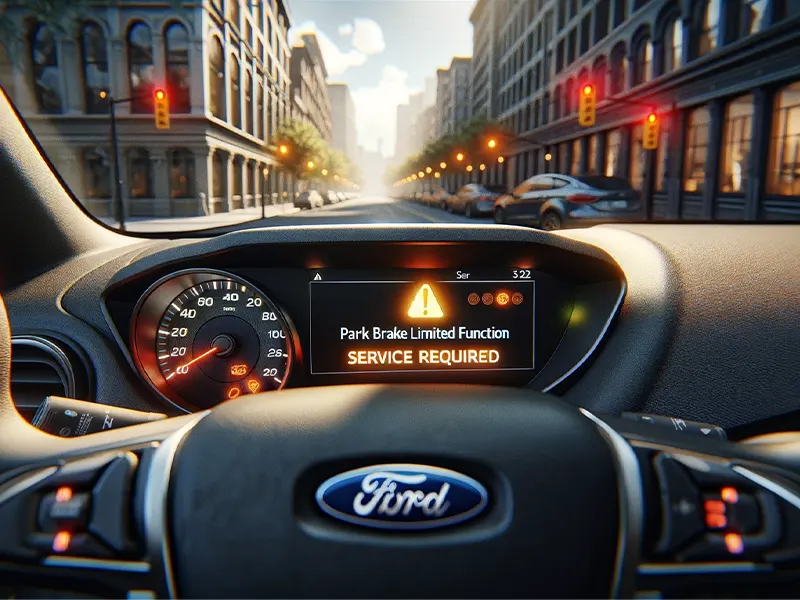Have you ever encountered the unsettling message “Park Brake Limited Function Service Required” flashing on your Ford Edge or Fusion dashboard? Don’t panic! While it certainly signifies an issue with your car’s Electronic Parking Brake (EPB) system, understanding the cause and taking prompt action can get you back on the road safely and efficiently.
Understanding the Problem
The EPB in your Ford Edge or Fusion is a sophisticated system that replaces the traditional lever with an electronic button for effortless parking brake engagement and release. It utilizes sensors, actuators, and a complex control unit to automatically apply and release the parking brake, offering enhanced convenience and safety.
However, when the “Limited Function” message appears, it indicates that the EPB system isn’t functioning at optimal capacity.
This could be due to various reasons, ranging from:
- Sensor or Actuator Malfunctions: Faulty sensors can misinterpret brake pad position or pedal pressure, while malfunctioning actuators might not apply or release the parking brake as intended.
- Wiring Harness Issues: Damaged or corroded wiring harnesses can disrupt communication between the EPB control unit and the sensors and actuators, leading to erratic behavior.
- Software Errors: Software glitches within the EPB control unit can cause misinterpretations of sensor data and incorrect brake operation.
- Battery Problems: A weak or failing battery can hinder the EPB system’s electrical supply, impacting its functionality.
Diagnosis and Troubleshooting
If you encounter the “Limited Function” message, here are some basic troubleshooting steps you can take:
- Check the Parking Brake Pedal and Release Button: Ensure they operate smoothly and fully engage and disengage the parking brake.
- Engage and Disengage the Parking Brake Several Times: This can sometimes reset the system and resolve temporary glitches.
- Observe for Unusual Sounds or Vibrations: Listen for grinding noises or abnormal vibrations during parking brake operation, which could indicate internal component issues.
Service and Repair Options
While these basic checks might offer temporary relief, professional diagnosis and repair by a qualified mechanic are crucial to address the root cause of the problem. Depending on the specific issue, service options may include:
- Electronic Diagnostics and Reprogramming: A dedicated scan tool can pinpoint the source of the malfunction, and software updates might be necessary to rectify software errors.
- Sensor or Actuator Replacement: Faulty sensors or actuators need to be replaced with genuine Ford parts to restore optimal performance.
- Wiring Harness Repair or Replacement: Damaged wiring harnesses require repair or complete replacement to ensure proper communication within the EPB system.
- Battery Testing and Replacement (if applicable): A failing battery needs immediate attention, and replacing it can resolve power-related issues affecting the EPB.
Cost Considerations
Repair costs for the “Limited Function” issue can vary depending on the specific diagnosis and required parts. Generally, expect to spend anywhere between $200 and $1000. However, timely attention can prevent further damage and potentially higher repair costs.
Additionally, some Ford models might have extended warranty coverage for the EPB system, so check your owner’s manual or contact your local Ford dealership for specific details.
Preventing Future Issues
Taking proactive steps can help maintain your EPB system and avoid future warnings:
- Avoid frequent short trips or parking on steep inclines. These can put additional strain on the EPB system.
- Engage the parking brake fully every time you park. This ensures proper brake pad engagement and reduces wear and tear.
- Regularly check for and address any warning messages. Don’t ignore warning lights – prompt attention can prevent minor issues from escalating.

John Smith, a Los Angeles-based car specialist and automotive writer, boasts over 20 years in the industry. With a background as a master technician and a decade-long writing stint at notable automotive publications, John now shares his expansive knowledge on CarFinite, simplifying car maintenance for readers.

